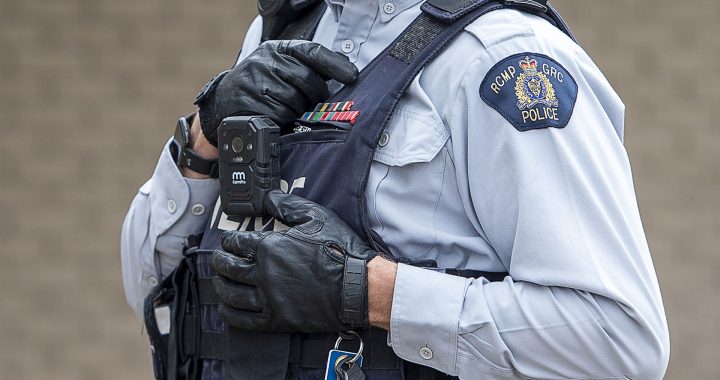The concept of identity has been on Lance Cardinal’s mind since he was a child growing up as a poor Cree and Two-Spirit boy in the small town of Calling Lake, Alta.
“It was really tough for me growing up. There was a lot of pressure for me to be a certain way,” says Cardinal on the latest episode of Face to Face with guest host Sav Jonsa.
Instead of playing sports or liking trucks like he was expected to, the now-accomplished artist and designer says he wanted to play with crafts like paper dolls as a kid.
Fast forward years later, Cardinal now has a television show on APTN called Indigenous Art Adventures, where he teaches children how to make crafts based around Cree cultural teachings and language.
His vibrant murals can be found throughout Alberta, and he’s designed for various brands like the Edmonton Oilers and Ikea Edmonton.
Cardinal’s art often features scenes set in the Canadian prairie landscape. Tipis, animals, and plants native to the region are usually featured amongst figures harvesting berries, smudging, or jingle dress dancing.
Cardinal says creating art inspired by his Cree culture has helped him understand his own Indigenous identity.
“I put myself into my work. Everything I do is a reflection of what I was growing up with all my life, what I saw in my house, what I heard at my grandma’s house, all the things I was taught. And then of course, trying to bring forward things I was never taught,” says Cardinal, who is a member of Bigstone Cree Nation in Alberta.
His grandparents were survivors of St. Martin’s Mission School, a residential school in Desmarais-Wabasca, which they attended until they were fifteen. He says the experience caused his grandparents to not share about their culture for many years.
“I’m on my own journey right now of self-discovery – discovering the part of myself as a cultural person that wasn’t given to me,” says Cardinal.
Cardinal believes that the “new wave of reconciliation is self-reconciliation” learning more about ourselves and our family history to heal from colonial traumas of the past and present.
To do this, Cardinal recently created a 1:12 scale miniature replica of his grandparent’s residential school – an idea he says he was given through a vision years ago.
“That was a very intense process for me,” says Cardinal, who consulted with community members while making the replica, “I met survivors that were in that very building, in that school, and they have memories of my grandmother – I’m learning [even more] about her now that she’s gone.”
“I think that having more understanding of what our grandparents went through in these spaces will help us understand why our parents have disconnect, why kids are on the streets, why … so many people are struggling with even getting out of bed in the morning,” says Cardinal.
When it comes to his Two-Spirit identity, Cardinal says it’s always been a struggle to find his place in the world.
“Even now as an adult it’s still difficult,” says Cardinal.
He shares that it was an Elder who helped validate his identity and brought attention to the gifts that it brings.
“[He brought] me into the forest to talk with me about my art, who I was as an artist, and I was really sort of conflicted about, you know, was my two-spirit self part of that journey; was it important, or was it even valued as an Indigenous person,” he says.
The Elder told Cardinal that he was valuable, and that his Two-Spirit side is a healing gift and part of that gift is his art.
“That Elder told me that … I was to use that skill and that gift to put my art forward and to express my voice in that way,” says Cardinal, “that was an amazing moment for me.”
Cardinal’s advice to others who are struggling with their identity is to talk with people who care about you, learn about your family history, and connect with the things that bring you joy.
“Identity is such a delicate and sensitive thing to explore,” says Cardinal. “When I try to figure out who I am, I always like to surround myself with a bunch of things, a bunch of ideas, a bunch of pictures, memories, and try to find places in there that feel right to me.
“I think even just exploring the land with your feet, walking in the grass where you grew up, finding out where your family are from and going there – connecting in a natural way with your home territory is probably the best thing to do.”
You can catch Indigenous Art Adventures on APTN and APTN Lumi starting respectively on March 23rd and 24th, 2024.











